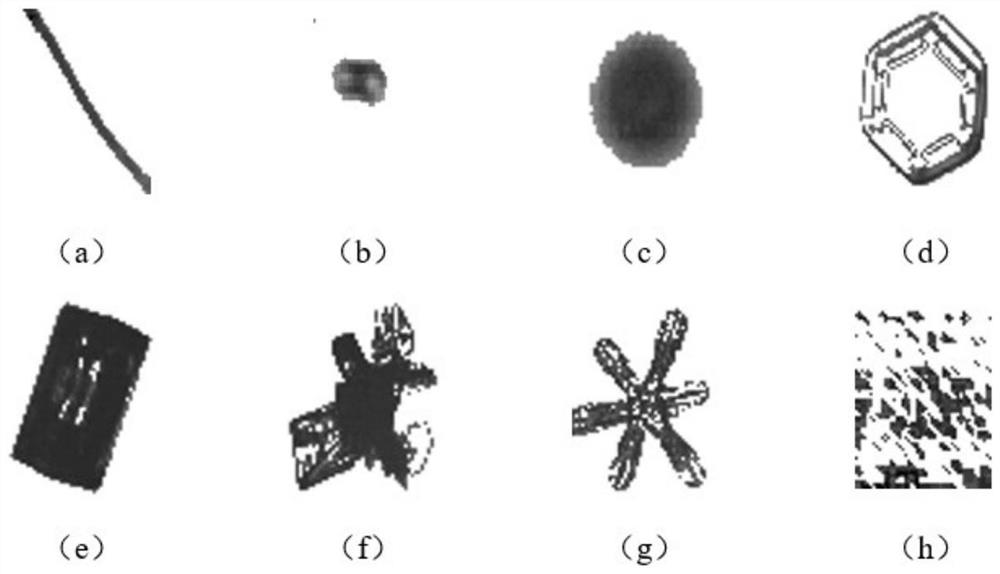A pca-based optimal classification and recognition method for svm cloud particles
A technology of classification, recognition and particle, applied in character and pattern recognition, instruments, computing, etc., can solve the problems of less application of CPI cloud particle classification, lack of targeted preprocessing of CPI cloud particle raw data, large noise of raw data, etc. , to achieve the effect of improving the efficiency of classification and recognition
- Summary
- Abstract
- Description
- Claims
- Application Information
AI Technical Summary
Problems solved by technology
Method used
Image
Examples
Embodiment Construction
[0035] The technical solutions in the embodiments of the present invention will be clearly and completely described below in conjunction with the accompanying drawings in the embodiments of the present invention. The method includes the following steps:
[0036] Step 1: Carry out cloud particle segmentation on the CPI image, including:
[0037] Step 1.1: Carry out grayscale processing to CPI image, concrete method is to convert RGB three-channel CPI image into single-channel grayscale image;
[0038] Step 1.2: Binarize the CPI grayscale image, first extract 10 cloud particle images I in the CPI grayscale image p , for 10 frame I p The pixel values in the image are sorted from large to small according to the gray value, and the 5% pixels with the largest gray value are selected to calculate the average gray value avg(I p ), and then with the background image gray value mean avg(I bg ) to compare and calculate a fixed threshold Th, where the background image I bg for the s...
PUM
 Login to View More
Login to View More Abstract
Description
Claims
Application Information
 Login to View More
Login to View More - R&D
- Intellectual Property
- Life Sciences
- Materials
- Tech Scout
- Unparalleled Data Quality
- Higher Quality Content
- 60% Fewer Hallucinations
Browse by: Latest US Patents, China's latest patents, Technical Efficacy Thesaurus, Application Domain, Technology Topic, Popular Technical Reports.
© 2025 PatSnap. All rights reserved.Legal|Privacy policy|Modern Slavery Act Transparency Statement|Sitemap|About US| Contact US: help@patsnap.com



